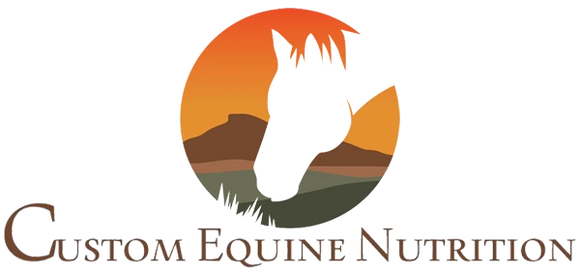Winter Water
Winter Water Intake
Winter is the most important time to ensure your horse has access to a constant supply of clean water. A horse's weight consists of 70% water. For your average 1,000lb horse, that is 700lbs of water!
Horses naturally drink less water in the winter, leaving it up to us to ensure adequate intake (6). This reduction, combined with the increased dry matter of hay, reduction of lush pasture, decreased exercise and sometimes reduced turn out, it's no wonder that vets see an increase in impaction colic through the winter. If a horse has inadequate water they will reduce the amount of dry matter they consume, leading to weight loss (1) (2). This can spell disaster for your hard keepers already struggling to maintain weight through the season. Not only does lack of water intake increase the risk of impaction, but mild dehydration can cause muscles to get tired and tie-up. Keep an eye on your horse's manure, if it looks drier than normal, you will want to increase your horse's water intake.
Having access to water in a pasture or turnout area can be difficult in Vermont, but it is essential. Horses cannot rely on snow as a water source. This bares repeating, horses cannot rely on snow.
The first problem with using snow as a water source is the sheer volume they need to consume. The snow to water ratio is 10 parts snow to 1 part water. For a horse to get 10 gallons of water through snow, they would need to eat 100 gallons of it! The second problem is that calories are used to melt snow, when these calories need to be used to keep your horse warm instead. Increased snow intake can lead to hypothermia, causing our horses to have a hard time staying warm. Again, this can be very hazardous for those hard keepers. Our horses already have a hard time staying warm in VT!
Horses drink less when the water temperature is cold (3) (4). Ideally, water temperature should be kept around 40-60 degrees fahrenheit. In one study horses drank 38-41% less cold water compared to water at 66 degrees.
Salt will also help encourage drinking (5). A horse at maintenance (not in work) requires 10g (10,000mg) of sodium per day. 1oz of salt provides 14g (14,000mg) of sodium. Horses should have access to a plain white salt block. However, if a 5lb salt block is not completely consumed with in two months, your horses is not meeting his sodium requirements, and salt should be added to his meals. Two level tablespoons will provide 1oz of sat. A horse in exercise will require 2-4x this amount. You can purchase a 50lb bag of plain salt at any local feed store for around $12, costing less than a penny per day. Compare that to the cost of a vet bill for impaction colic, cheap insurance!
Expensive "Designer Salt" is not necessary, nor recommended. Don't be fooled by the claim that these salts provide needed nutrients. The amount of these nutrients are so miniscule that they might support a fly.
Provide your horse with an adequate amount of salt, 24/7 access to water at 40-60 degrees fahrenheit to keep his body functioning property and reduce the chance of impaction this winter.

1. Sneddon JC, van der Walt JG, Mitchell G. Water homeostasis in desert-dwelling horses. J Apple Physiol. 1991;71:112.
2. Houpt KA, Eggleston A, Kunkle K, Houpt TR. Effect of water restriction on equine behaviour and physiology. Equine Vet J. 2000;32:341–344. doi: 10.2746/042516400777032200.
3. Kristula MA, McDonnell SM. Drinking water temperature affects consumption of water during cold weather in ponies. Appl Anim Behav Sci. 1994;41:155–160. doi: 10.1016/0168-1591(94)90020-5
4. Water, concentrate, and hay intake in thoroughbred racehorses, Pagan, J.D. et al.Journal of Equine Veterinary Science , Volume 52 , 89
5. Water, concentrate, and hay intake in thoroughbred racehorses, Pagan, J.D. et al. Journal of Equine Veterinary Science , Volume 52 , 89
6. Nutrient Requirements of Horses, Sixth Revised Edition, 2007. Washington, D.C.


